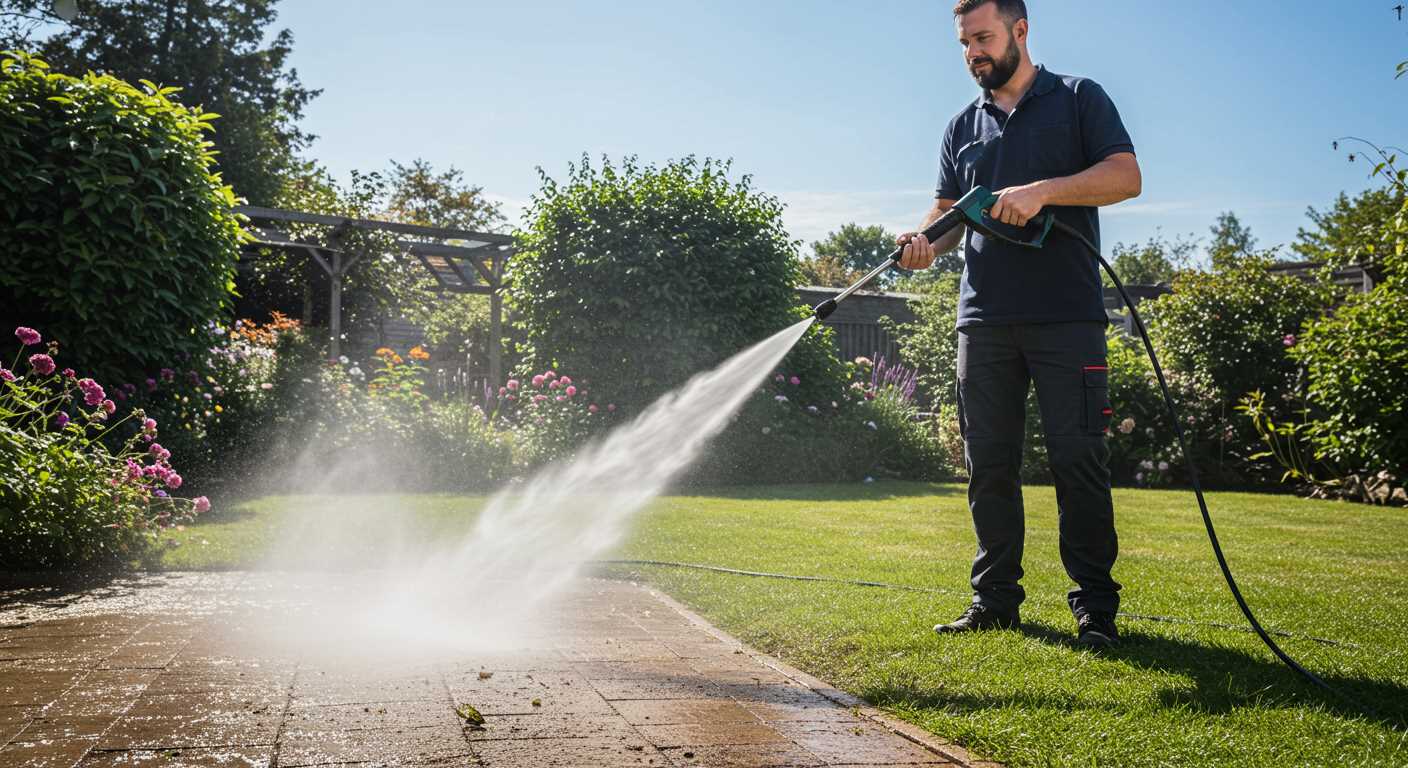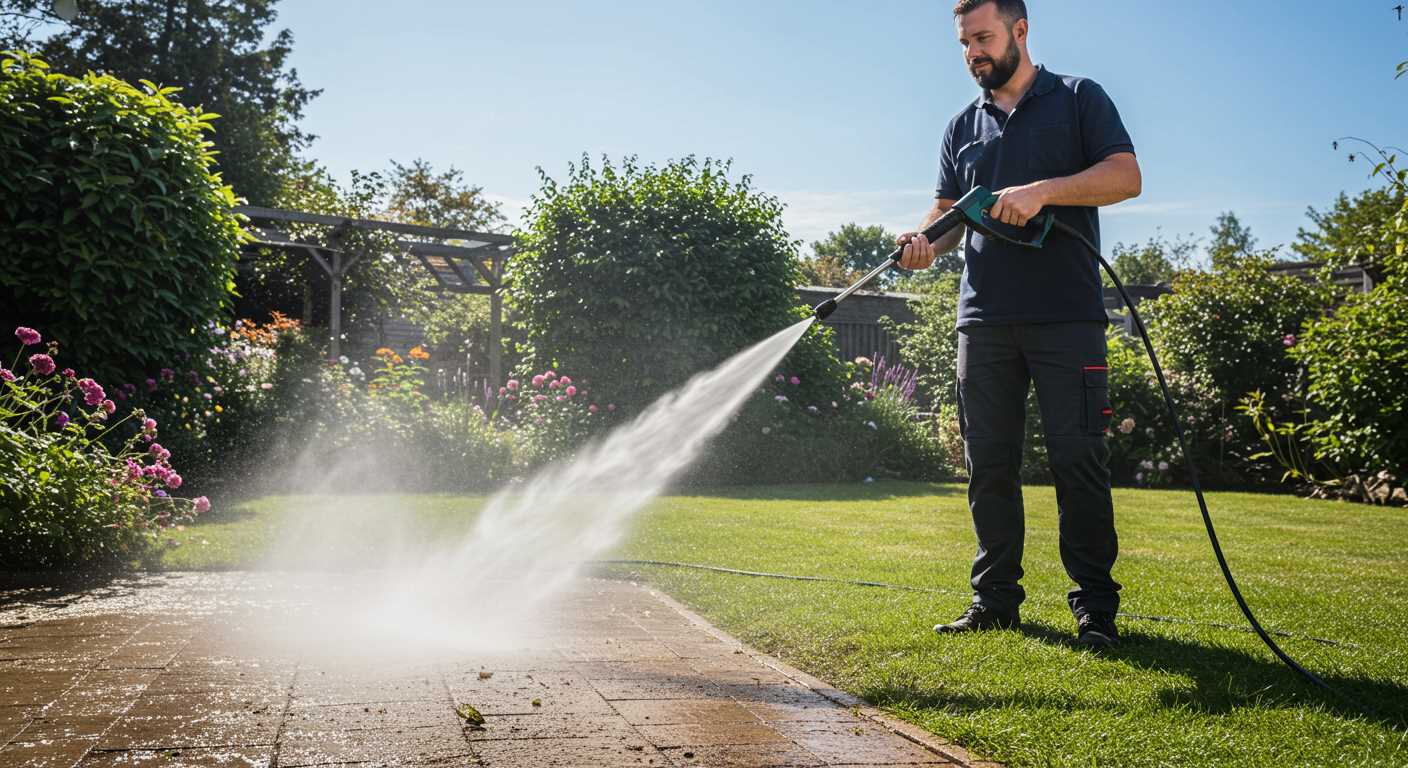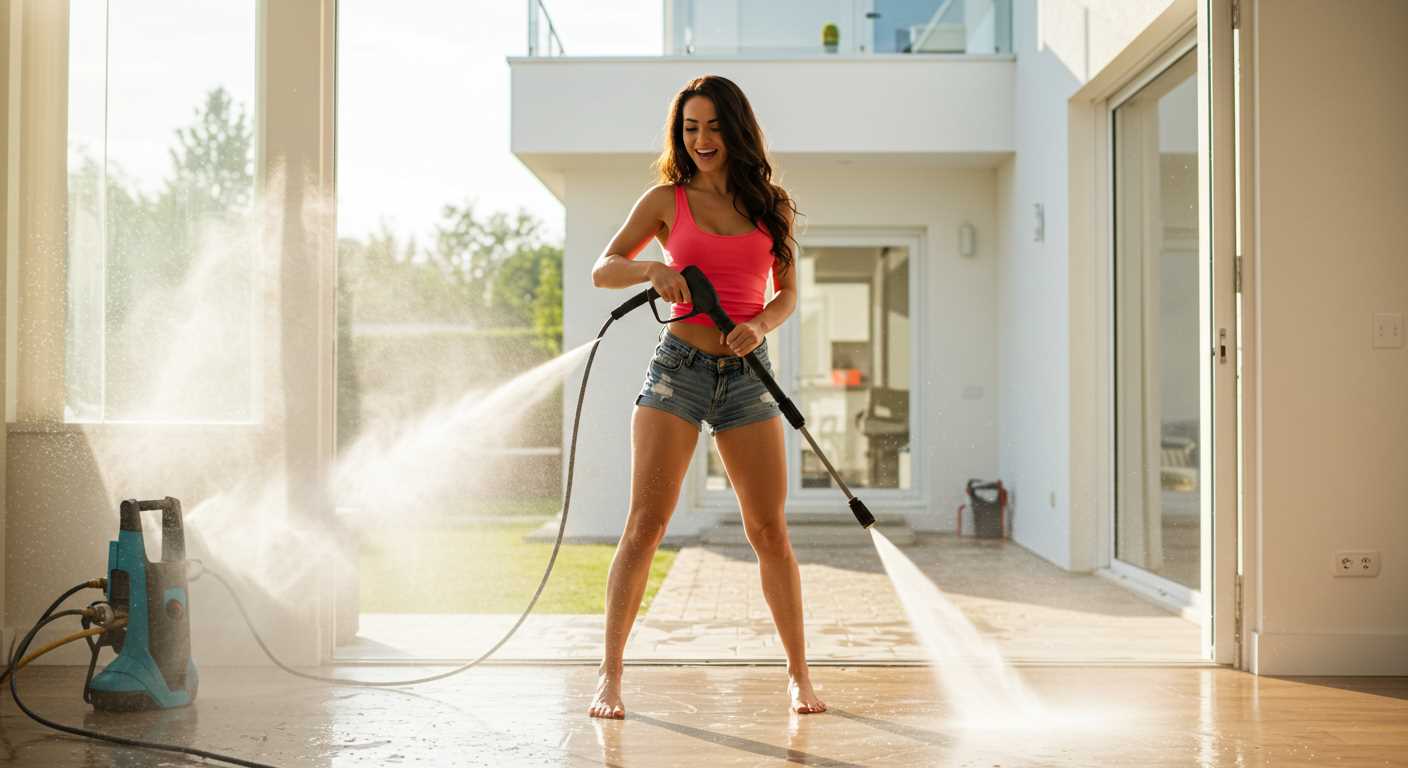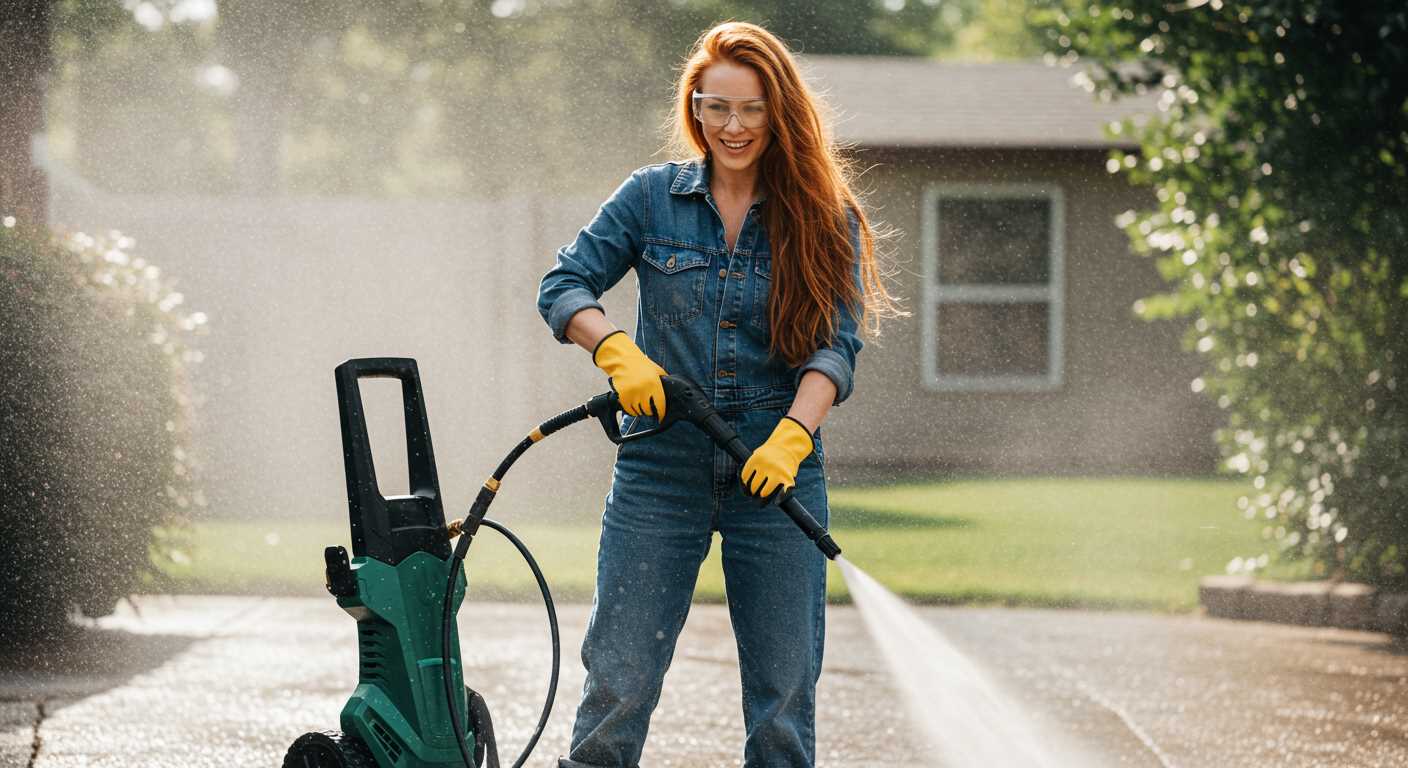


Direct contact with high-velocity water jets can lead to serious injuries. During my decade of experience in the cleaning equipment industry, I’ve seen firsthand the consequences of neglecting safety precautions. Whether it’s a careless slip or a moment of inattention, accidents can happen quickly. The force of the jet can break skin and cause deep tissue damage, leading to painful injuries that require medical attention.
Always prioritise safety gear when operating this type of equipment. Protective eyewear, gloves, and sturdy footwear should be non-negotiable. I recall an incident where a colleague lost a toenail due to a misdirected jet. It’s a stark reminder of how crucial it is to maintain control and awareness while in use. Positioning your body correctly and ensuring bystanders are at a safe distance can mitigate many risks.
Understanding the specifications of your device is equally important. Each model has unique pressure ratings and nozzle types that determine its effectiveness and safety. I’ve encountered users who underestimated the power of the machine they were using, leading to unintended consequences. Familiarise yourself with the owner’s manual and adhere to its guidelines to ensure a safe and productive cleaning experience.
Can a Pressure Washer Cause Injury?
Always wear protective gear when operating this equipment. I recall a time when I was testing a particularly powerful model, and I neglected to don my safety goggles. A sudden kickback sent debris flying into my eyes, leading to a painful experience that could have easily been avoided. Proper eye protection is non-negotiable.
Be cautious of the nozzle. I’ve seen many users underestimate the force emitted from the tip. One friend lost a chunk of skin on their hand while trying to clean a stubborn stain without using the correct attachment. The wrong choice can lead to serious injuries, so always use the appropriate nozzle for your task.
Maintain a safe distance from surfaces. I learned this the hard way while cleaning a wooden deck. Standing too close caused splinters to fly into my legs. Keeping a distance not only protects you from potential harm but also ensures an even clean.
Watch your footing. Slippery surfaces can lead to falls. During one particularly ambitious cleaning day, I slipped on wet concrete while manoeuvring the gear. To prevent accidents, ensure the area is clear and dry before starting your work.
Be mindful of surroundings. I once had my hose entangle with a garden fence, which caused the machine to jerk unexpectedly. Always check your environment to avoid accidents caused by obstacles or tripping hazards.
Finally, don’t operate alone if you’re inexperienced. I remember a colleague who attempted to tackle a large project solo. They struggled with the equipment, leading to fatigue and a near-miss accident. Having someone nearby can not only assist you but also provide immediate help if something goes awry.
Understanding Pressure Washer Force and Its Impact
When using high-pressure equipment, always be aware of the force it generates. This machinery can exert immense pressure, which can lead to significant injuries if not handled properly. My years of experience have taught me to respect this power.
Here are key aspects to consider regarding the force produced:
- Pressure Levels: Different models operate at varying psi (pounds per square inch). For instance, residential units might range from 1300 to 2300 psi, while commercial variants can exceed 3000 psi. Higher pressure means a greater risk of injury.
- Distance Matters: The closer the nozzle to the skin or surface, the greater the chance of harm. A safe distance can reduce the impact significantly.
- Spray Tip Selection: Nozzles come in various sizes, each producing a different spray pattern and force. Using a wider spray can distribute force over a larger area, reducing the risk of injury.
During my tenure, I encountered various situations where individuals underestimated the force of the stream. One memorable incident involved a colleague who neglected to wear protective gear while cleaning a heavily soiled surface. The equipment slipped, and the force caused a painful injury to his hand. This incident reinforced the importance of safety measures.
Another essential factor is the surface being cleaned. Hard surfaces like concrete may withstand higher pressure, but softer materials such as wood or certain plastics can be easily damaged or cause recoil that may result in injury.
Here are some practical tips to minimise risks:
- Always wear protective eyewear and gloves.
- Test the equipment on a small, inconspicuous area first.
- Maintain a firm grip on the unit to prevent slipping.
- Be mindful of your surroundings; ensure no one is in the vicinity.
Understanding the force behind this cleaning method is crucial. Respecting the equipment and following safety precautions can prevent injuries and lead to effective cleaning without mishaps. Always remember, safety comes first.
Common Injuries Caused by High-Pressure Cleaning Equipment
In my years of working with high-pressure cleaning equipment, I’ve seen a variety of injuries that can occur if proper precautions aren’t taken. Here are the most common types of injuries I’ve encountered:
- Skin Lacerations: Direct contact with the jet can slice through skin, leading to deep cuts. I’ve witnessed this happen when operators get too close without protective gear.
- Eye Injuries: Debris can be propelled at high speeds, resulting in serious eye damage. Always wear safety goggles to protect your vision.
- Hearing Damage: The noise levels can exceed safe limits. Long exposure without ear protection can lead to permanent hearing loss. I’ve learned to use earplugs during extended use.
- Slip and Fall Incidents: Water and cleaning agents can create slippery surfaces. I’ve seen operators lose their footing, resulting in sprains or fractures. Proper footwear with grip is a must.
- Repetitive Strain Injuries: Prolonged use can lead to strains in the arms and back. I recommend taking regular breaks and using ergonomic techniques when handling the equipment.
- Burns: Hot water can cause severe burns. Always check the temperature settings and avoid direct contact.
Each of these injuries can be avoided with the right precautions. Using protective gear, maintaining a safe distance, and being mindful of surroundings are key. In my experience, safety training is just as important as knowing how to operate the equipment. Make sure to prioritise safety to enjoy the benefits of this powerful tool without the risks.
Protective Gear You Should Wear While Using a Pressure Washer
Always wear safety goggles to shield your eyes from debris and water spray. I’ve seen too many people underestimate the importance of eye protection. Just one small rock can cause serious injury. A good pair of goggles ensures you stay safe while working.
Next, invest in a sturdy pair of gloves. Look for heavy-duty, waterproof gloves that provide grip without sacrificing dexterity. I remember a colleague who didn’t wear gloves and ended up with painful blisters after just a few minutes of use. Protect your hands; they’re your most valuable tools.
Footwear is another critical aspect. Steel-toed boots are ideal, as they shield against falling objects and provide stability on slippery surfaces. I once had a mishap while using a washer on uneven ground, and the right footwear made all the difference in maintaining my balance.
Don’t overlook clothing. Long sleeves and trousers made of durable material can prevent cuts and abrasions. I’ve had my share of brush burns from hose lines. Opt for clothes that will keep your skin safe from unexpected splashes and sharp objects.
Finally, consider hearing protection. The noise levels can be surprisingly high, especially with powerful models. I learned this lesson the hard way during a long day of work when I ended up with ringing ears. A simple pair of earplugs or noise-cancelling headphones can make a significant difference.
In summary, the right protective gear is non-negotiable. Each piece plays a role in ensuring a safe and effective experience while using high-pressure cleaning equipment. Make safety a priority for every job.
Safe Operating Practices for Pressure Cleaning Devices
Always maintain a safe distance from surfaces while operating, ideally at least two feet away. This helps prevent unintentional damage and reduces the risk of injury. Regularly check the equipment for leaks or malfunctioning parts before starting. A faulty unit can lead to accidents.
Ensure the work area is free of bystanders and pets. I’ve seen too many close calls when operators didn’t account for their surroundings. If working on a roof or elevated surface, secure yourself with harnesses to avoid falls. If using an extension, make sure it’s sturdy and properly connected.
Adjust the nozzle according to the task. A concentrated jet is suitable for tough grime, while a wider spray is better for delicate surfaces. This adjustment can prevent excessive force that may harm both the surface and the operator.
It’s wise to follow the manufacturer’s guidelines regarding operational time. For instance, refer to this link for insights on how long can you run a pressure washer without stopping. Continuous operation without breaks can overheat the machine, leading to potential hazards.
When using chemicals, ensure proper ventilation and follow safety instructions on the labels. Mixing incorrect substances can create harmful fumes. I once mistakenly combined two cleaners, and the resulting reaction was alarming; it served as a reminder to always read labels thoroughly.
Lastly, keep the area free of obstacles. Cords and hoses can easily become tripping hazards. I’ve had a few tumbles because I overlooked this detail. A clean workspace not only promotes safety but also enhances efficiency. For those looking to complement their gardening tasks, consider checking out the best corded garden vacuum for maintaining a tidy environment.
What to Avoid When Using a High-Pressure Cleaner
Always steer clear of directing the jet towards people, animals, or delicate surfaces. I once witnessed a friend accidentally hit his dog with the stream. The sheer force left a mark, and it took quite some time to calm the poor creature. Always ensure the area is clear of any living beings before starting.
Avoid Electrical Hazards
Never operate near electrical wires or outlets. I’ve seen too many instances where someone has inadvertently sprayed an extension cord, creating a dangerous situation. Always ensure your equipment is grounded and away from any electrical sources.
Mind the Environment
Be cautious of surrounding plants and surfaces. I mistakenly aimed at a flower bed once, and the high-velocity water stripped the leaves bare. Certain materials, such as wood or thin metal, can easily be damaged. Test a small area first to gauge the impact.
| Hazard | What to Avoid |
|---|---|
| People and Pets | Aim the jet away from them |
| Electrical Sources | Stay clear of wires and outlets |
| Delicate Surfaces | Test on small areas first |
| Inadequate Protection | Neglecting to wear protective gear |
Neglecting safety gear can lead to injuries. I’ve had my share of close calls due to not wearing goggles. Debris can fly unexpectedly, and it’s not worth the risk. Always gear up properly.
Lastly, be wary of using the wrong nozzle for the task. I’ve mistakenly used a narrow spray on a surface that required a wider angle, resulting in unnecessary damage. Always match the nozzle type to the material you’re cleaning.
How Distance Affects Safety with High-Pressure Equipment
Maintaining an appropriate distance from the surface being cleaned is crucial for minimising risks associated with high-force cleaning devices. I remember a time when I was cleaning a stubborn oil stain from a driveway. I stood too close, and the force of the stream caused debris to ricochet off the surface, hitting my leg. This incident highlighted the importance of keeping a safe distance.
Recommended Distances for Different Surfaces
Each surface requires a specific distance to ensure safety and effectiveness. Here’s a table summarising those distances:
| Surface Type | Recommended Distance (feet) |
|---|---|
| Concrete | 1-2 |
| Wood | 2-3 |
| Vehicles | 2-3 |
| Glass | 3-4 |
| Brick | 1-2 |
Adjusting Distance Based on Pressure Settings
The intensity of the equipment’s output also dictates how close you should be. Higher settings demand greater distance. I learned this the hard way while trying to clean a wooden fence at maximum pressure. Standing too close resulted in splintering wood, not to mention a painful experience. Always adjust your stance based on the setting you’re using.
In summary, a safe distance not only protects you but also enhances the cleaning process. Remember to assess the surface type and pressure setting before starting your task to avoid accidents and achieve the best results.
Recognising Warning Signs of Potential Injury
Watch for unusual vibrations in the equipment. If you notice excessive shaking or instability, it often indicates a malfunction. This could lead to loss of control, putting you at risk of injury.
Listening for Alarming Noises
Pay attention to strange sounds during operation. Grinding or clanking noises may signal internal issues that require immediate attention. Ignoring these can result in serious accidents.
Identifying Inconsistent Performance
A drop in performance, such as fluctuating pressure or erratic spray patterns, can be a warning sign. This inconsistency can catch you off guard, increasing the likelihood of accidents. Always inspect the nozzle and hoses for blockages or wear.
- Examine hoses for leaks or cracks.
- Check the connections to ensure everything is secure.
- Be alert for sudden bursts of water that may come from faulty equipment.
Look for signs of fatigue in your own body. Prolonged use can lead to decreased concentration and increased risk of mishaps. Take regular breaks to maintain focus and ensure safe handling of the device.
- Take a five-minute break every 30 minutes.
- Stay hydrated to keep your energy levels up.
- Stretch your muscles to avoid cramping and fatigue.
Always be aware of your surroundings. Watch for slippery surfaces or obstacles that could pose a risk. Maintaining vigilance can prevent accidents that arise from both equipment malfunction and environmental hazards.
First Aid Measures for Pressure Washer Injuries
If an accident occurs, the first step is to assess the severity of the injury. For minor skin lacerations, rinse the affected area with clean water to remove any dirt or debris. Apply a sterile bandage after cleaning. If the cut is deep or bleeding heavily, apply pressure with a clean cloth and seek medical assistance immediately.
For injuries caused by high-speed water jets, which can lead to more serious damage, do not attempt to remove any foreign objects embedded in the skin. Instead, cover the area with a clean cloth and seek professional medical help right away. Time is critical in these cases to prevent infection or further complications.
In case of eye injuries, flush the eye immediately with clean, flowing water for at least 15 minutes. Avoid rubbing the eye and seek emergency care. Exposure to chemicals from detergents used in conjunction with high-pressure equipment can also cause irritation; rinsing thoroughly is paramount.
Burns from hot surfaces or high-temperature water require immediate cooling. Place the affected area under cool (not cold) running water for at least 10 minutes. Cover the burn with a clean, non-stick dressing and avoid applying ice directly to the skin.
For respiratory issues due to inhaling cleaning agents or debris, move the individual to fresh air immediately. If symptoms such as coughing, wheezing, or difficulty breathing persist, professional medical evaluation is necessary.
Always keep a first aid kit readily available when operating cleaning equipment. Familiarise yourself with the contents and ensure that all supplies, including antiseptics and dressings, are in good condition. Regular training on first aid procedures can make a significant difference in emergency situations.
Consulting Professionals: When to Seek Help
If you’re facing challenges with a high-pressure cleaning device, reaching out to experts can save time and prevent accidents. I often recommend consulting a technician if your machine exhibits unusual behaviour or if you notice leaks or strange noises. These signs often indicate underlying issues that require professional attention.
Assessing Your Skill Level
Evaluate your familiarity with operating such devices. If you feel uncertain about how to handle advanced features or specific attachments, it’s wise to seek guidance. In my early days, I made mistakes that could have been avoided had I asked for help sooner. Don’t hesitate to reach out for training or instruction from seasoned users or instructors.
Injury Concerns
When injuries occur, it’s critical to consult a medical professional, especially if there’s a deep wound or if you experience persistent pain. I recall an instance where a colleague underestimated a minor injury, only to discover it required stitches later. If there’s any doubt about your safety or health, prioritise getting professional medical advice.
In situations where you’re unsure about the correct operational techniques or safety measures, hiring a professional can provide peace of mind. Their expertise ensures you’re using the equipment correctly, minimising risks and maximising efficiency.
Trust your instincts. If something feels off, whether with the equipment or your own handling of it, don’t hesitate to seek help. It’s better to be safe and informed than to risk injury or damage.




.jpg)


